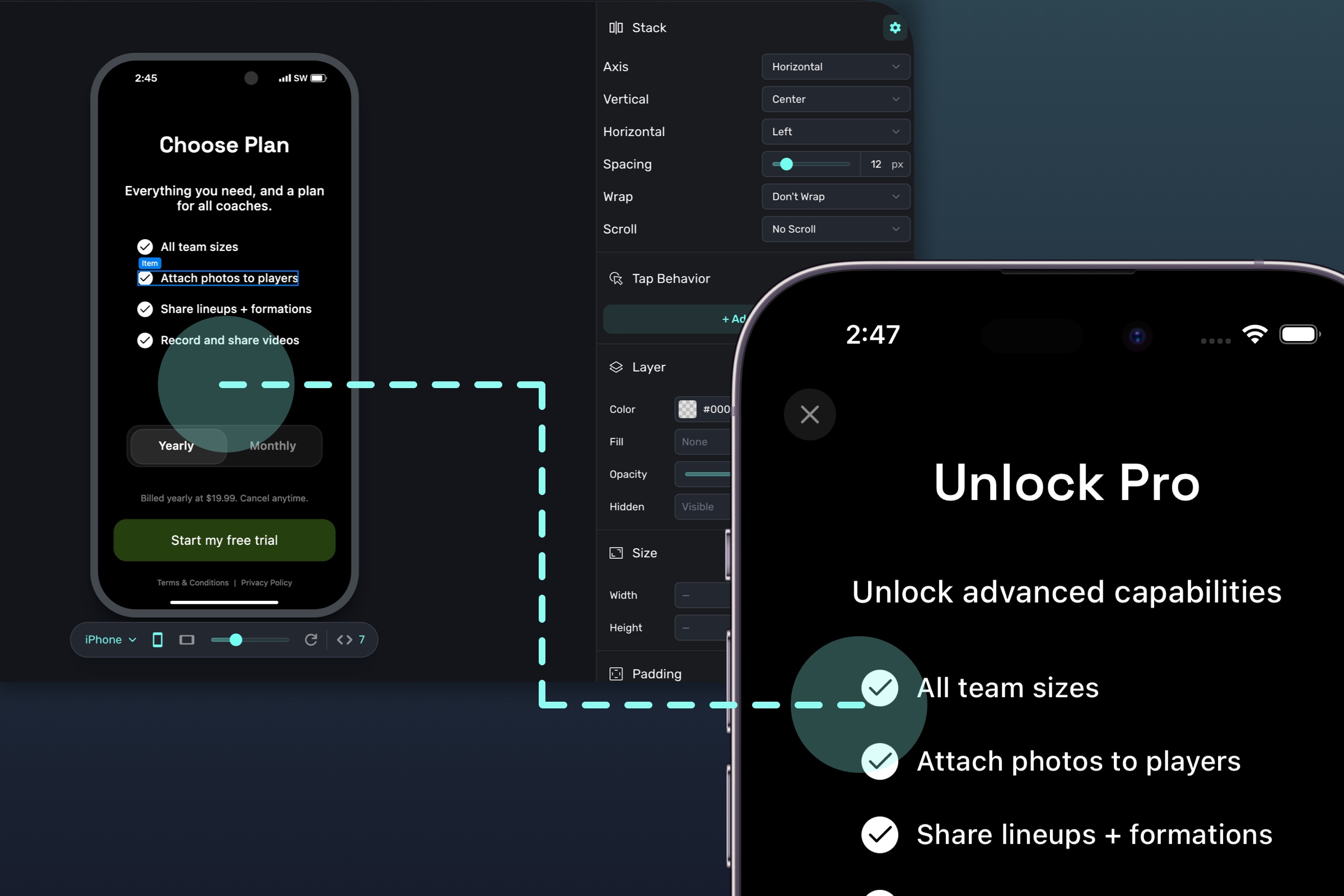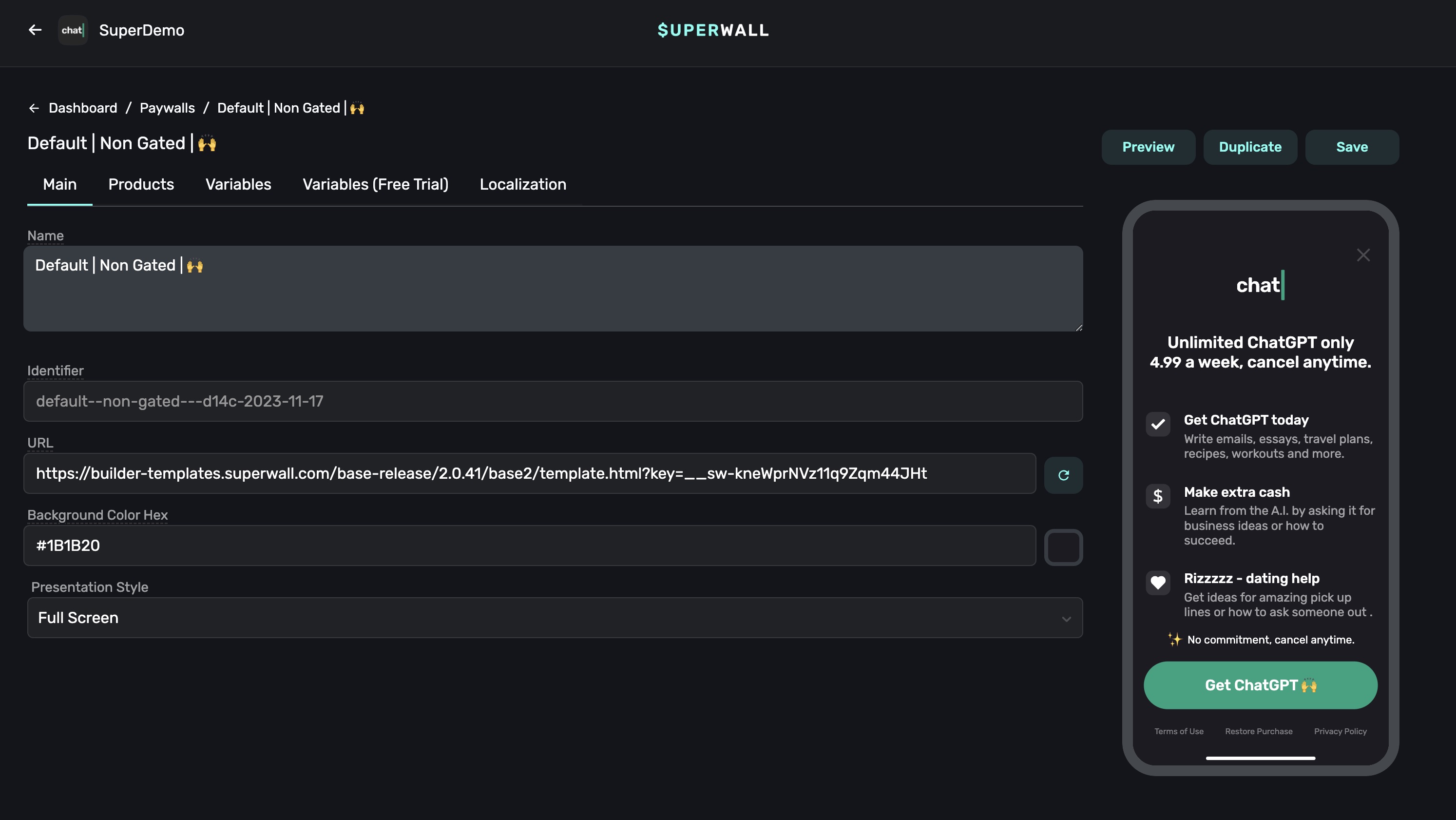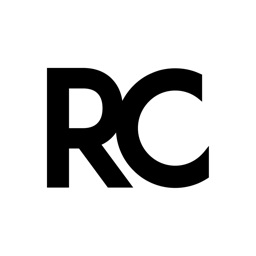When Superwall started building its platform, the company faced a fundamental architectural decision that would shape everything developed since. The team had to choose one of two ways to build its core product, the paywalls themselves:
Native: Create similar, or separate, rendering engines for iOS, Android, and web.
Web-based: Embrace web technologies. HTML and CSS are a commonly spoken language on most any computing platform.
At first glance, a native implementation may seem like the first choice. Instead, Superwall deliberately chose web views. Since this question arises often, here’s why that decision was made, how it has become Superwall’s biggest competitive advantage, and how it helps apps grow.
The trust factor: What you see is what you get
At the heart of our value proposition is trust. Customers are building paywall interfaces that sit directly between their users and potential revenue. The moment there is a disconnect between what is designed in the editor and what appears on end-user devices, that trust is broken.

With web views, Superwall achieves something other native-first implementations can struggle with: pixel-perfect consistency. The same layout engine that renders a paywall in the browser-based editor is the same one rendering it in an iOS app, Android app, React Native implementation, or Flutter integration. There is no additional translation layer, no custom interpretation, and (most importantly) no "close enough" approximations. It is 1 to 1.
What customers design is exactly what users see, every single time.
This is not just a nice-to-have feature; it is existential for a paywall platform. When dealing with the interface closest to revenue, "mostly works" is not good enough. Perfect reliability is not just a goal; it has become Superwall’s promise.
Backwards compatibility that always works
Here is a metric Superwall is particularly proud of: every paywall built on Superwall version 1.0 still works today. The editor has gone through several iterations since the beginning. Like every company, many new features have been introduced along the way. And the core offering has evolved. But those original paywalls? They render flawlessly, exactly as they did the day they were made.

This level of backwards compatibility is nearly impossible to achieve with native implementations. It is even difficult to use recent platform APIs. When building separate rendering engines for each platform, updates inevitably introduce breaking changes. Components get deprecated, rendering behaviors shift, and suddenly customers could be stuck choosing between new features and stable existing implementations.
Web technologies offered a different path. HTML and CSS have decades of backwards compatibility built into their DNA. Browser engines are designed to render old content alongside new additions. By building on this stable foundation, Superwall inherits that stability without needing to engineer it internally.
The iteration advantage
Superwall was built around a core belief: iteration drives revenue. The more experiments customers run, the more money they make. This is not just theory; it is empirically proven across Superwall’s customer base. The companies that iterate fastest on their paywall designs consistently see the highest conversion rates.
Web technologies are simply the fastest way to iterate. When Superwall introduces a new component or feature, there is no need to:
Build separate implementations for iOS and Android.
Wait for SDK updates to propagate.
Worry about version compatibility across different client versions.
Create fallback scenarios for older implementations.
Instead, Superwall ships HTML and CSS. It works immediately across every platform, device, and SDK version. Customers can start using new features the moment they are released, without waiting for App Store approvals, coordinating updates across development teams, or ensuring clients have the latest SDK.
Debunking the "server-driven" myth
Some argue that web views require network connectivity while native, server-driven implementations are inherently more resilient. In reality, this reflects a misunderstanding of how most server-driven UI implementations actually work.
Server-driven UI, at its core, is HTML. Whether sending JSON that gets interpreted into native components or HTML that renders directly, both approaches transmit a description of the interface over a network call. Both approaches face the same connectivity challenges.
When network connectivity is lost, Superwall’s web views cache and display previously loaded content. Paywalls remain functional even in offline scenarios. Native implementations would need to build a similar caching mechanism. One approach does not inherently avoid these challenges more than the other.
Still tapping into native APIs
Developers, product managers, or founders may worry about missing out on platform-specific capabilities. For example, iOS' haptics make apps feel alive, tactile, and responsive. With Superwall, these features remain available.
With custom actions, developers can run any arbitrary code in response to a button tap:
func handleCustomPaywallAction(withName name: String) {
if name == "trigger_haptics" {
HapticsManager.trigger()
}
}
swift
It only takes seconds to set up, and a guide is available here. Since Superwall provides a direct line into the app, developers can always use or trigger whichever platform API is needed.
No silver bullets
Of course, no implementation is a silver bullet. Each architectural decision comes with strengths and trade-offs. For web views, some challenges involve platform APIs that are not readily available to web technologies. On iOS, this might include Dynamic Type or Apple's nascent Liquid Glass (which currently has a private CSS property). While support is technically possible, it does not come as easily as it would with a native architecture.
Superwall has invested quite a few engineering hours into solving these types of problems. The effort is worthwhile. One of the first things many customers do is run an "A/A" test with Superwall. This involves recreating their existing paywall in Superwall’s editor and testing it against their current paywall. This confirms that a stable baseline is maintained before moving on to other experiments.

The takeaway? Conversion rates are always the same, within an acceptable margin. That means users cannot tell the difference. As a recent Hacker News post over web views in apps put it, "the main reason web views in apps have such a bad reputation is because you don't notice the web views that are integrated seamlessly." We aim to hit that seamless mark every single time.
The not-so-obvious choice that pays off
Choosing web views was not the obvious decision when Superwall started. The mobile development world has a strong native bias, and for good reason—native implementations feel right at home and offer more platform-specific features for more involved UI and UX (for example, Liquid Glass).
But paywalls are not typically complex applications. They are focused, conversion-optimized interfaces that must work consistently across every platform. For this specific use case, web technologies provide exactly what is needed: reliability, consistency, and speed of iteration.
Superwall is shipping new features weekly, maintaining perfect backwards compatibility, and giving customers the fastest iteration cycle in the industry.
Wrapping up
The web platform continues to evolve rapidly, with new capabilities being added constantly. CSS features enable more sophisticated layouts, JavaScript APIs provide richer interactions, and performance improvements narrow the gap with native implementations.
Is a web view the right choice for an entire app? Most likely not. Is it a great choice for a single view? Absolutely.
By building on web technologies, Superwall is not just solving today’s problems—it is positioning itself to take advantage of every improvement the web platform delivers. The choice to use web views was never a compromise or a shortcut. It was a strategic decision that aligns perfectly with the company’s core mission: helping businesses optimize their conversion funnels through rapid iteration and reliable execution.
While others debate the merits of native versus web, Superwall is busy shipping features and helping customers increase revenue. Customers are seeing the results and reaping the benefits. Anyone can join them today by creating a free account.
















